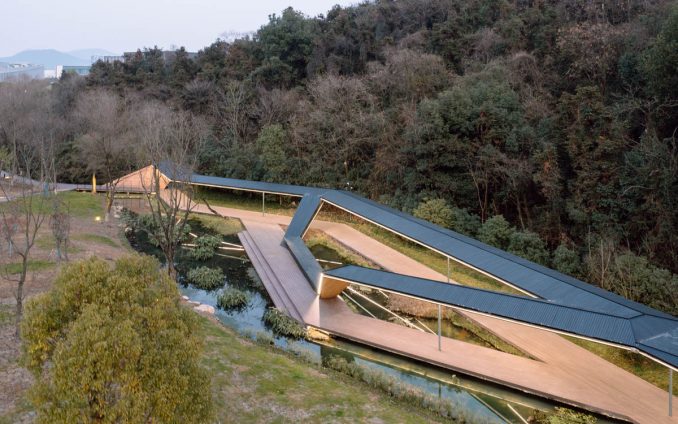
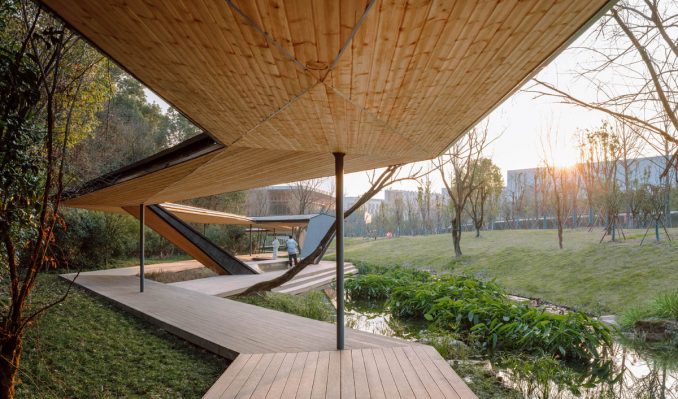
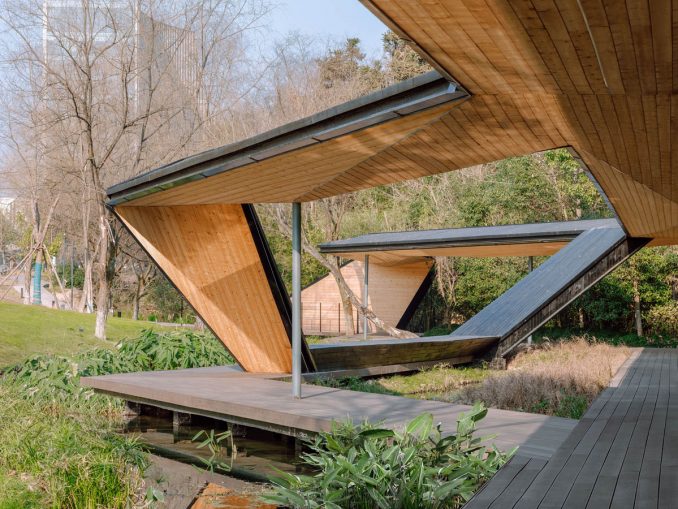
The Zhejiang Conservatory of Music’s Floating Cornice is a public landscape feature by the brook that moves organically across the campus. The campus is a rare nationally designated natural picturesque region that serves not only students but also a larger audience of music lovers and naturalists because of its unique natural resources and architectural style. As a result, the design of the Floating Cornice focuses on three key challenges: the first and most importantly is to consider the site’s original landscape context; the second is to connect the teaching and living building groups in the north and south; and the third, to create a communication space that allows art activities to occur at any time. The design utilizes two strategies: the first is to maintain the natural environment with little intervention, and the second is to offer a walking and recreational area.
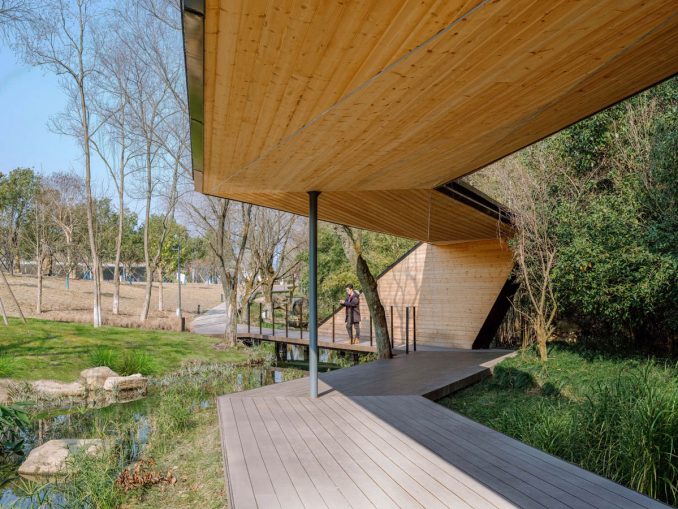
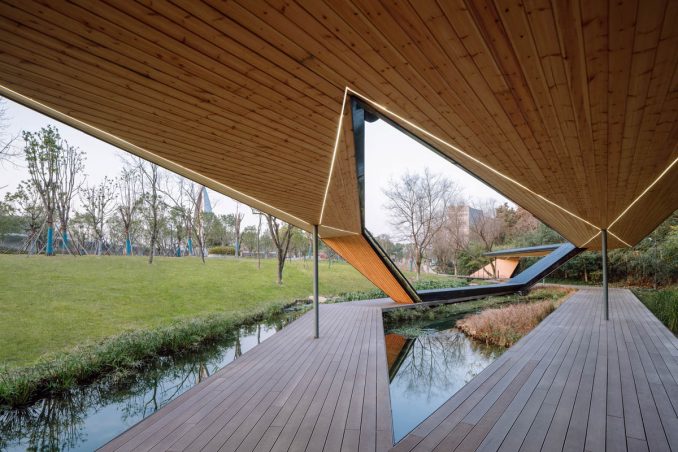
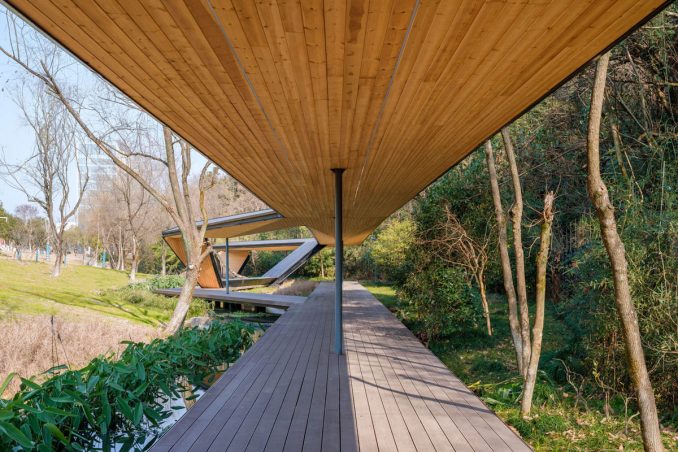
The existing site was an abandoned garden by a brook. Initially, the designers sorted out the site’s biological environment and silted excavation, providing a basic map for the next design. The floating volume aims to preserve the site’s ecological integrity by avoiding any existing plants and providing enough shelter spaces to meet the hot, humid, rainy climate. The folded form’s adaptability allows it to be turned into roofs above and seats downwards to rich the variety of forms and functions for sitting, observing, and roaming. The structural design fulfils both aesthetic and technical standards, as the fine arts impact architectural excellence. With the help of structure design, the roof’s structural system employs simply supported box beams with only five steel columns to make the corridor seem lighter.
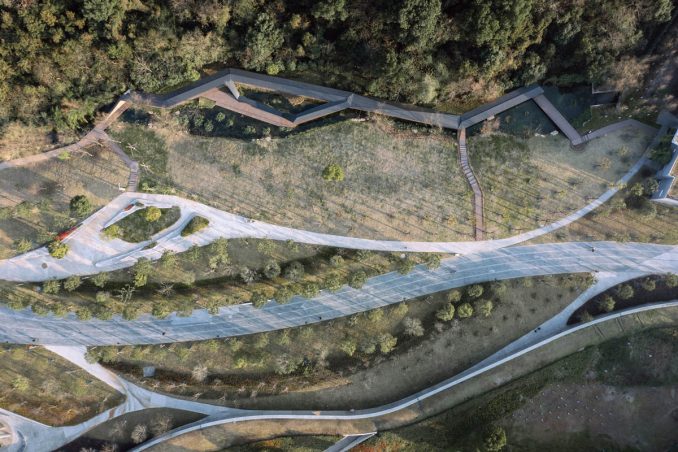
Another essential consideration in the design of the Floating Cornice is long-term viability. The best choice of material is wood, with its ductility performance, warm texture and long-term sustainability. After being processed by the manufacturer, all wood and steel are placed on site, which is efficient and easy while avoiding pollution. Cheap energy usage with little pollutants, as well as low operating and maintenance expenses.
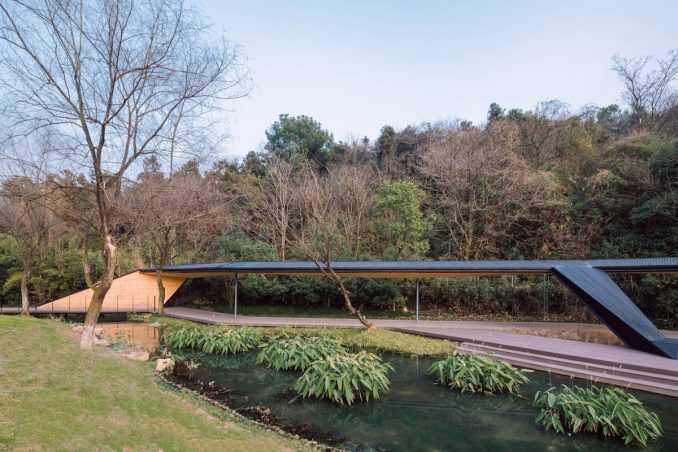
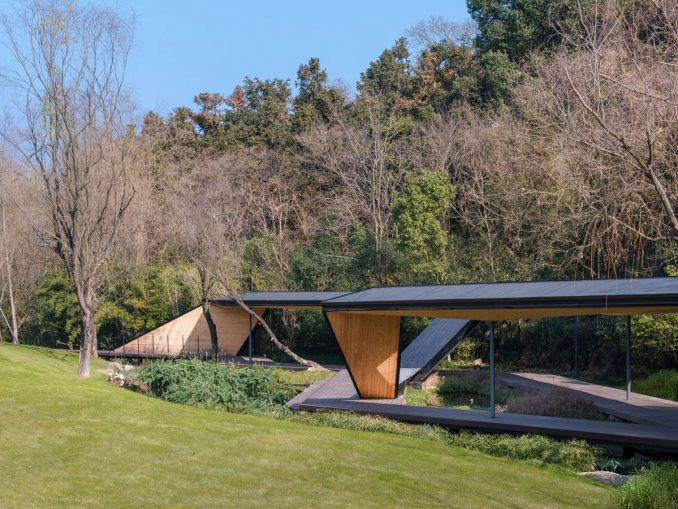
Operating according to a superposition and diversity of atmospheres, climates and ecological restoration, the designers established a new ecological system with aquatic plants while the building space fully interacted with the natural landscape. As a consequence, the abandoned garden has been resurrected with vibrant scenes, such as the sun shining through the trees and wooden corridor and brook water running over the wooden bridge, stimulating interest and engagement between these aspiring musicians.
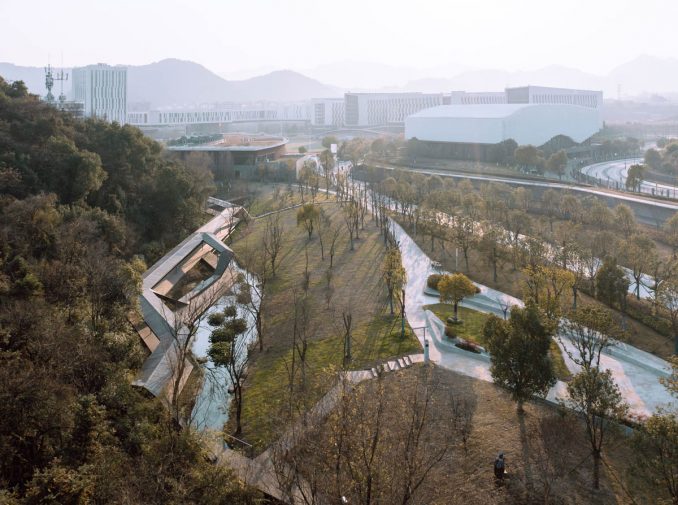
Because of the distinctive setting, a variety of social art events are organized. Floating Cornice, as part of the campus, provides an environmentally friendly, creative, pleasant, and versatile public area, as well as an additional opportunity for outdoor art activities.
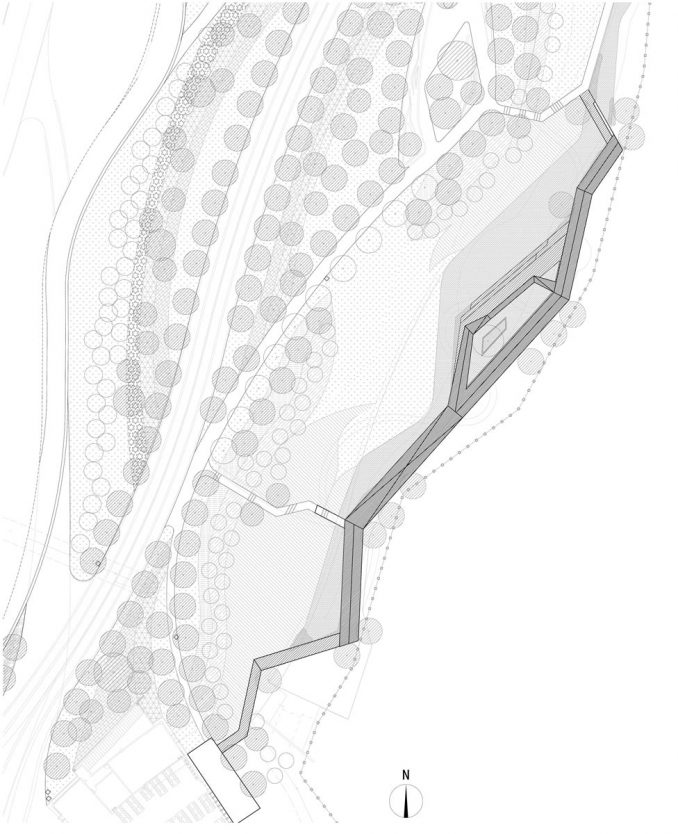
Floating Cornice on the Brook
Landscape Architect Firm: line+
Chief Architect: Zhu Peidong
Landscape Design Leader: Li Shangyang
Client: Zhejiang Conservatory of Music
Image Credits: line+
Photographer: Zhu Runzi
